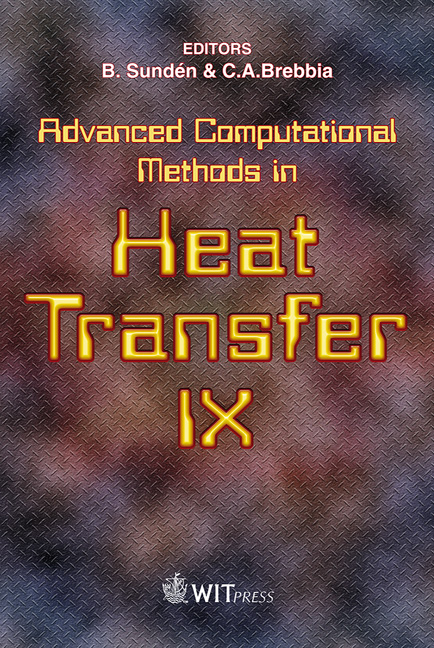Autowave Regimes Of Heat And Mass Transfer In The Non-isothermal Through-reactors
Price
Free (open access)
Transaction
Volume
53
Pages
10
Published
2006
Size
434 kb
Paper DOI
10.2495/HT060181
Copyright
WIT Press
Author(s)
A. M. Brener & L. M. Musabekova
Abstract
The paper deals with autowave processes in non-isothermal reacting diffusion systems. The mathematical model of heat and mass transfer in a tubular through-reactor has been submitted. The model consists of the diffusion-kinetic equations for two reagents under the first-order reversible reaction and heat transfer equation with allowance for a heat of reaction. Reaction rate constants for direct and reverse stages are related to temperature according to the Arrhenius law. The cases of both the adiabatic and non-adiabatic reactor have been considered. The stationary regimes and conditions of their stability have been investigated by methods of hydrodynamic stability theory and numerical experiment. As a result, the simultaneous governing transfer parameters including thermal, diffusion and kinetic characteristics of both reagents with allowance for the two reaction stages were detailed. The existence conditions for dissipate structures which can be identified as running circular cells or wave fronts have been obtained. Results of the investigations can be applied to calculating the heat and mass transfer intensity in chemical reactors and heat exchangers. 1 Introduction Studies of autowave processes in chemical systems with diffusion are of great interest for scientists and engineers of different specialties now. The problem to describe such processes in every details is too complex and far from the complete solution. At the same time, the dynamics of dissipate structures has been investigated for isothermal multiphase systems sufficiently well [1–4]. But regularities of generating and propagating autowaves in non-isothermal systems with chemical reactions accompanied by heat effects have been studied
Keywords





